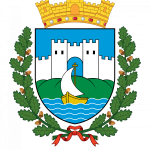Natural beauties
- Home
- Natural beauties
 Get To Know Us
Get To Know Us Natural beauties - Ohrid Lake
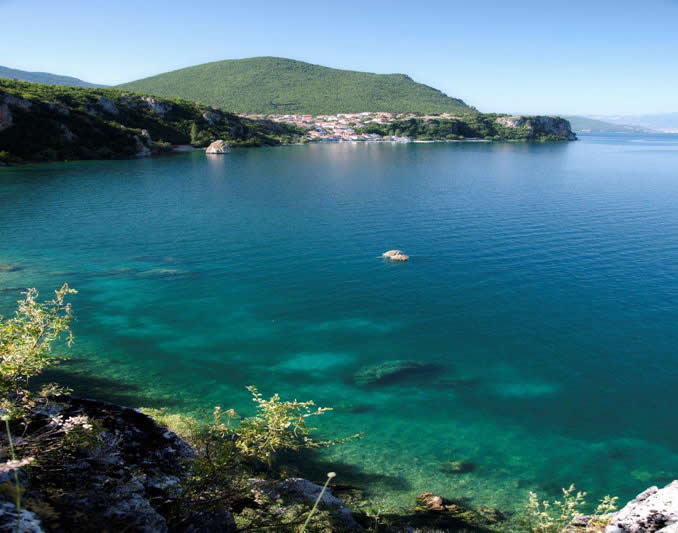
Waiting for adventures? Don’t miss them
Exploring Ohrid Lake: Ohrid Lake is deep and crystal clear. You can take a dip in waters that are over 2 million years old. The beaches are inviting, and the view of the surrounding mountains is truly impressive.

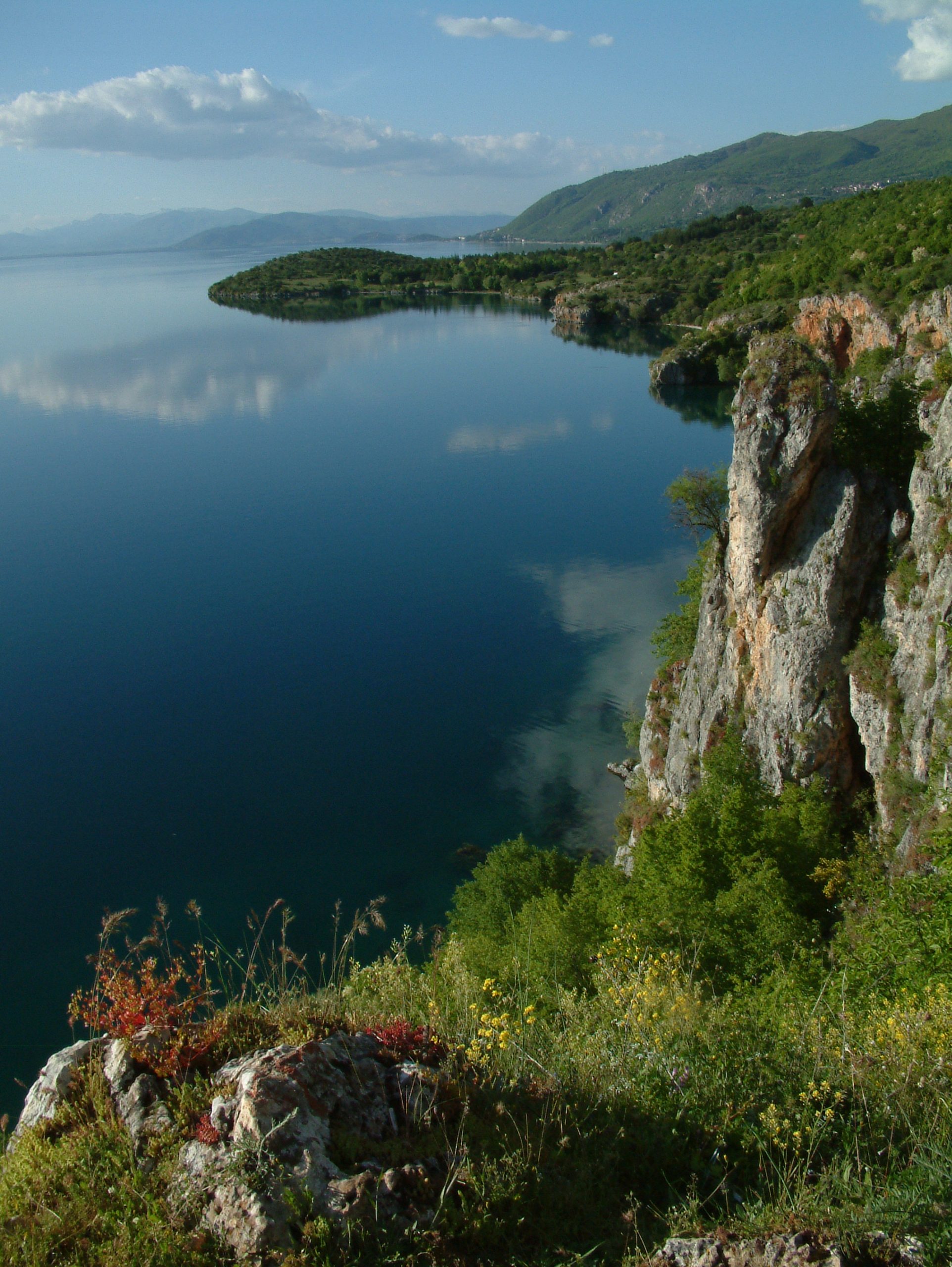

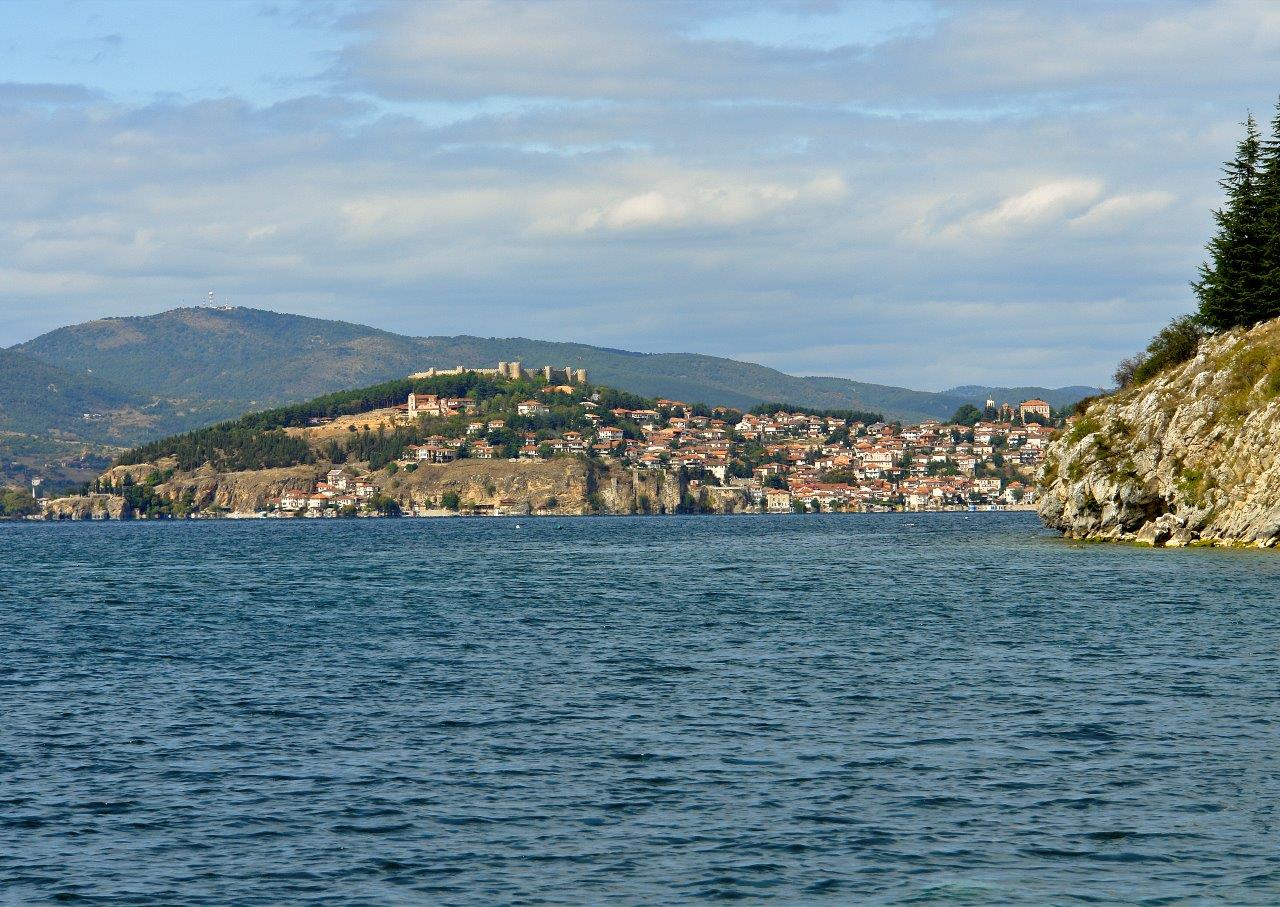

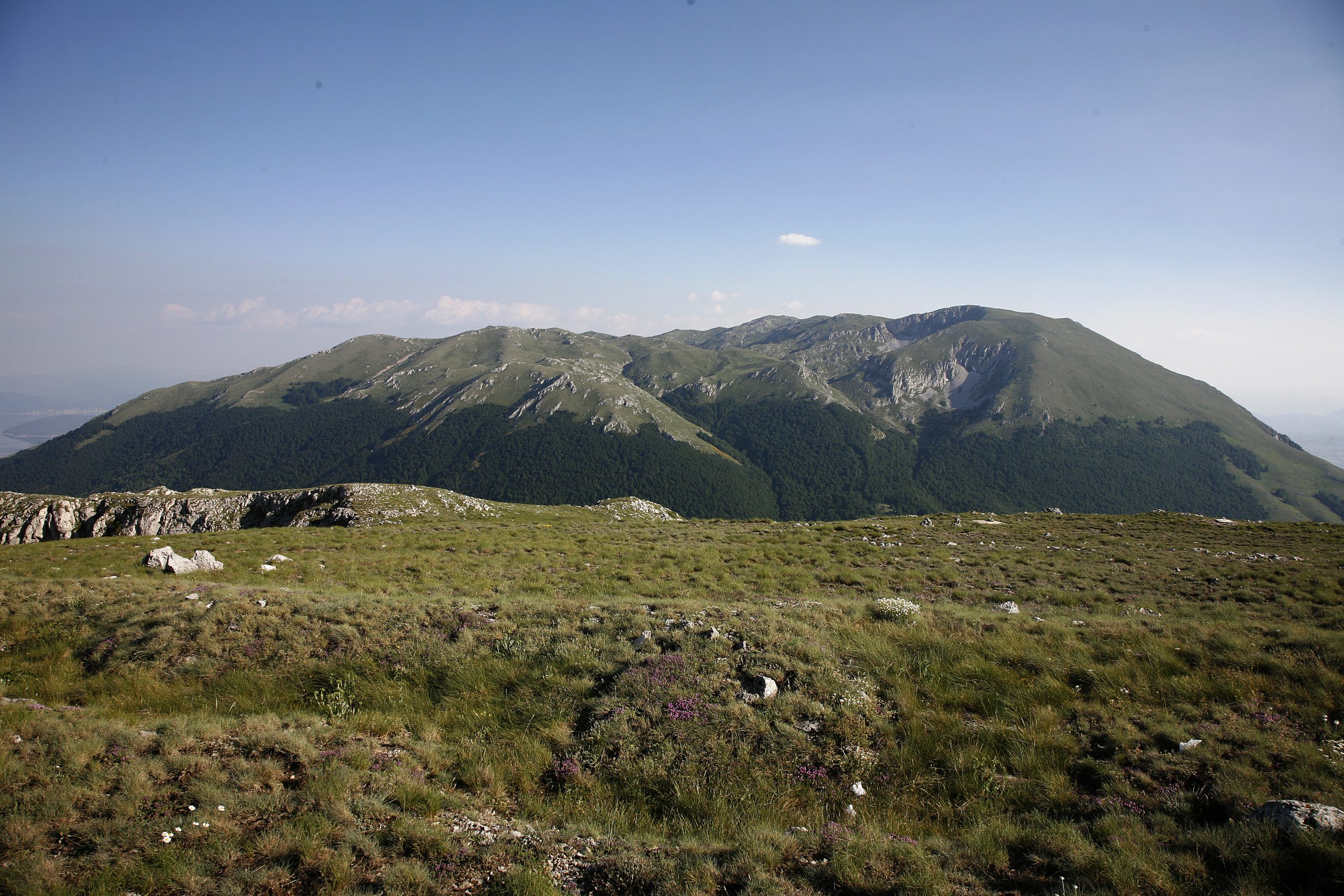

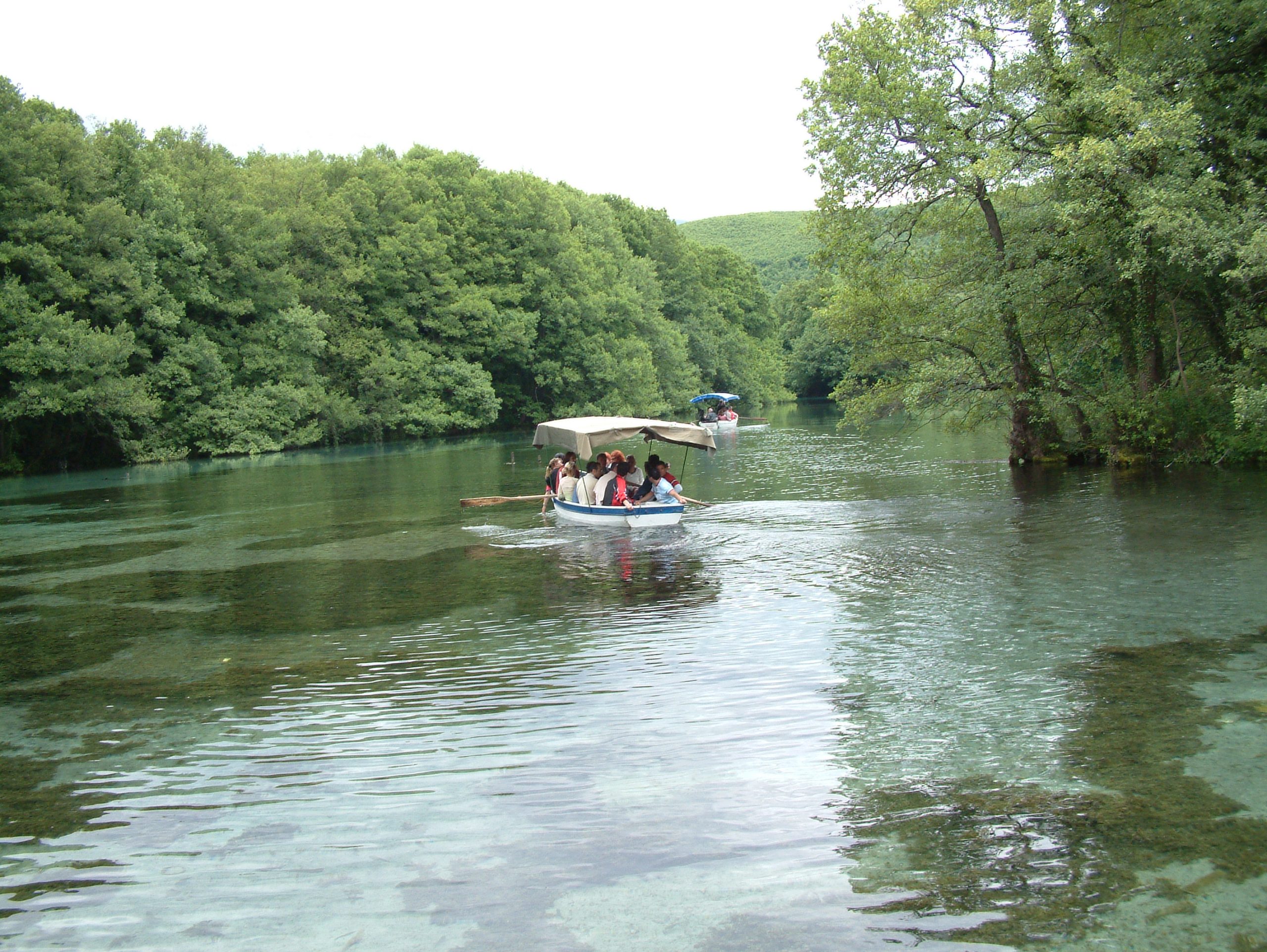
 Lake Ohrid
Lake Ohrid A Unique Aquatic Ecosystem
Lake Ohrid has a unique aquatic ecosystem in a global geographic framework. Its uniqueness emanates from the lake’s old age and origin, the specifics of the hydro morphological characteristics and of course, the vast biodiversity and the existence of endemic and rare life forms that inhabit the Lake Ohrid basin.
Lake Ohrid is the oldest lake in Europe with a continuous existence of its aquatic ecosystem. The scientific data about the life-span of the lake is between 2 and 10 million years. However, according to the latest geology research of the Lake Ohrid basin, the life-span of the lake is estimated to be around 1, 2 million years (Wagner et al.,2015).
The surface of the Lake Ohrid is at an elevation of 693 metres above the sea level, with a maximum length of 31 km and 15 km width, with a maximum depth of 288 metres, measured between the villages Peshtani and Trpejca, and its crystal clear water which has an astonishing transparency of up to 22 metres. The lake with its enchanting scenery attracts the attention of many scientists and nature lovers from all around the world.
Surrounded by high mountains all around from which the Galichica Mountain, that has a National Park status, distinguishes itself by its beauty and rich vegetation. The Lake Ohrid basin occupies the bigger part of the valley which represents a tectonic creation of the Shara-Pindus mountain system.
There are many springs that flow into the lake from the territory of Macedonia, as well as the ones from Albania. The most prominent springs from the Macedonian side that can be found in many legends and folk songs are the Black Drim River Springs at the St. Naum Monastery, whereas from Albania are the Tushemisht Springs.
With its unique flora and fauna, Lake Ohrid is considered to be one of the biggest biological reservoirs in Europe. From the very first scientific researches that had been done during the 20th century it has been discovered that in the Lake Ohrid, as one of the oldest lakes on the planet, ancient life forms that do not exist anywhere else in the world or can be found only as fossils, have survived here.
Lake Ohrid fish fauna has an exceptional significance and consists of 17 species, ten of which are endemic. They are divided into three groups: trout, white fish and eels. The most famous among the endemic species that belong to the family of Trouts are “Letnica” (Salmo Letnica) and “Belvica” (Salmo Ohridanus). The other species that inhabit this rich lake basin are: the eel (Anguilla anguilla), the chub (Leuciscus Cephalus), the carp (Cyprinus carpio), the barbell (Barbus fluvialis), the roach (Rutilus rubilius ohridanus), as well as the little bleak (Alburnus, alburnus Alborella).
Ohrid round sponge (Ochridaspongia rotunda), endemic to Lake Ohrid is one of the most interesting relic form of the lake, although there are other sponge species that are more prevalent in the lake basin. The scientists compare the Ohrid round sponge only to the endemic sponges of the Tiberias Lake (the Sea of Galilee) in the Middle East and the Lake Baikal in Siberia. The conclusion of the scientists is that Ohrid, Baikal and Tiberias sponges are very old remains of the ancient life forms from the Euro-Asian region and each species exist even today in their own lake basin.
The systematic researches of the Lake Ohrid have started in 1922 by Dr. Sinisha Stankovic, PhD. His scientific work about the ancient flora and fauna have lasted more than half a century up until his death. He proved that Lake Ohrid is inhabited by a tremendous number of endemic and completely unknown life forms and for that reason this lake presents a “Unique Natural Museum”. Therefore, Lake Ohrid is one of the rarest natural reservoirs on our planet, and what is very important from a scientific point of view is that this lake has not changed geologically for quite a long time. Exactly for this reason Lake Ohrid is considered as an ideal laboratory for discovering many secrets regarding the origins and the existence of life forms on the planet.
The fauna and flora which characterizes with its immense biodiversity of endemic and ancient species gives a special attribute to the lake on a world level. Although the number of the endemic species is the highest in the Lake Baikal, where there are 632 endemic species, the Lake Ohrid with its 212 endemic species spread out on the lake surface of 358 km2, is distinguished in the world as lake with greatest biodiversity per area unit. (Albrecht & Wilke, 2008).

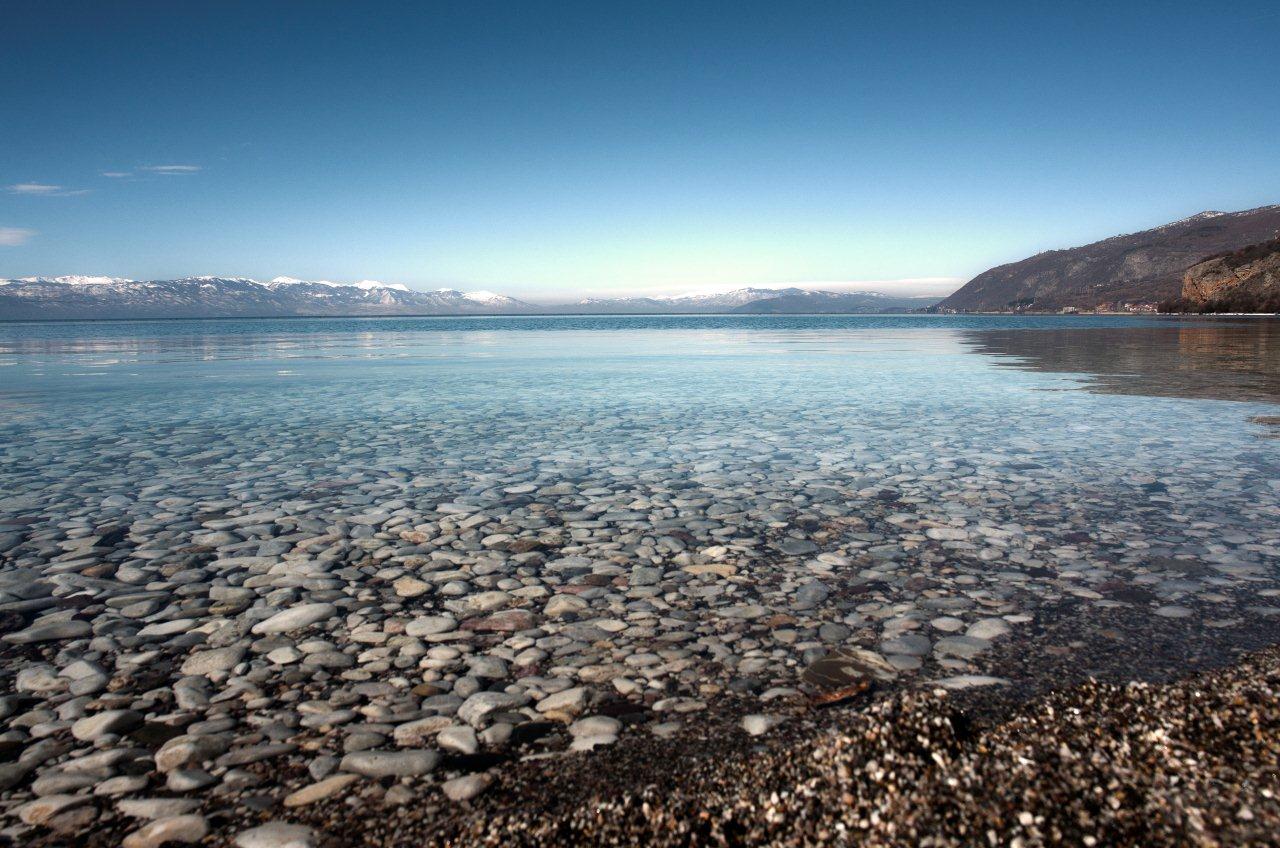

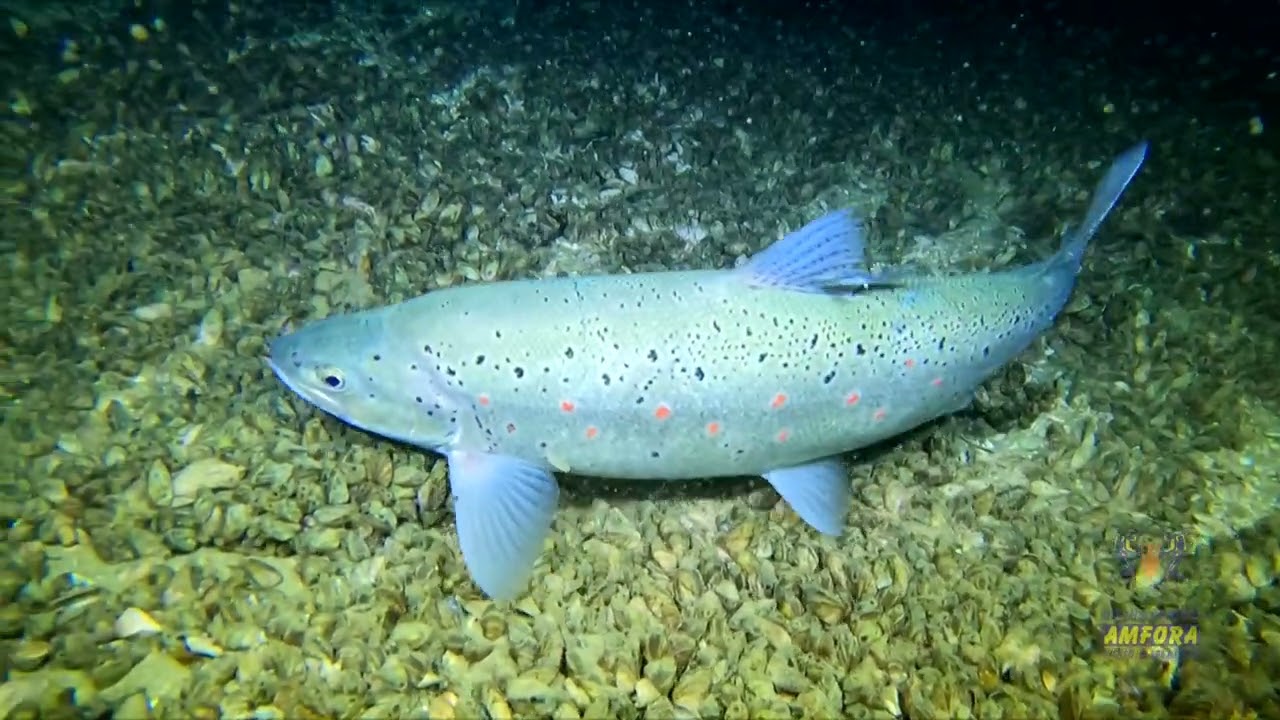
The Ohrid Trout ( Salmo Letnica)
The most famous and the most delicious fish is of course the Ohrid trout. It is an endemic type of freshwater fish in Europe and it is the closest ancestor to the species which have lived in this region since the Tertiary Period. During the day, the Ohrid trout stays hidden in the depths of the water far away from the shore, while at night swims out on the surface looking for insects. Sometimes it approaches the shore, swimming in the shallow water and searching for food from the underwater plants. Ohrid trout is known under different names such as ‘letnica’, ‘koran’, ‘strv’, ‘belush’, ‘Struga trout’ and ‘belvica’. Ohrid trout differentiates from the stream trout because it has a flattened body, a small head and a star like gray freckles on its body. The color of its meat is sometimes white or pink. The maximum length ranges from 25 to 60 cm, whereas the maximum weight is 22 kilos.
The Ohrid trout is very tasty and as such it has been known throughout the whole Macedonian history; it can be seen on fresco painting, it is mentioned in folk songs and by all travel writers who once passed by this region. Some unsuccessful attempts to conserve it and to make it available for a greater number of consumers have been made.
The trout is one of the trademarks of Macedonia and it can also be seen on the Macedonian coins. In the past, fishing played a crucial role in the economic life in Ohrid, but because of the reducing of the fish stocks, fishing has been limited and controlled in recent years, while the qualified people make sure that there is enough fish stocking.

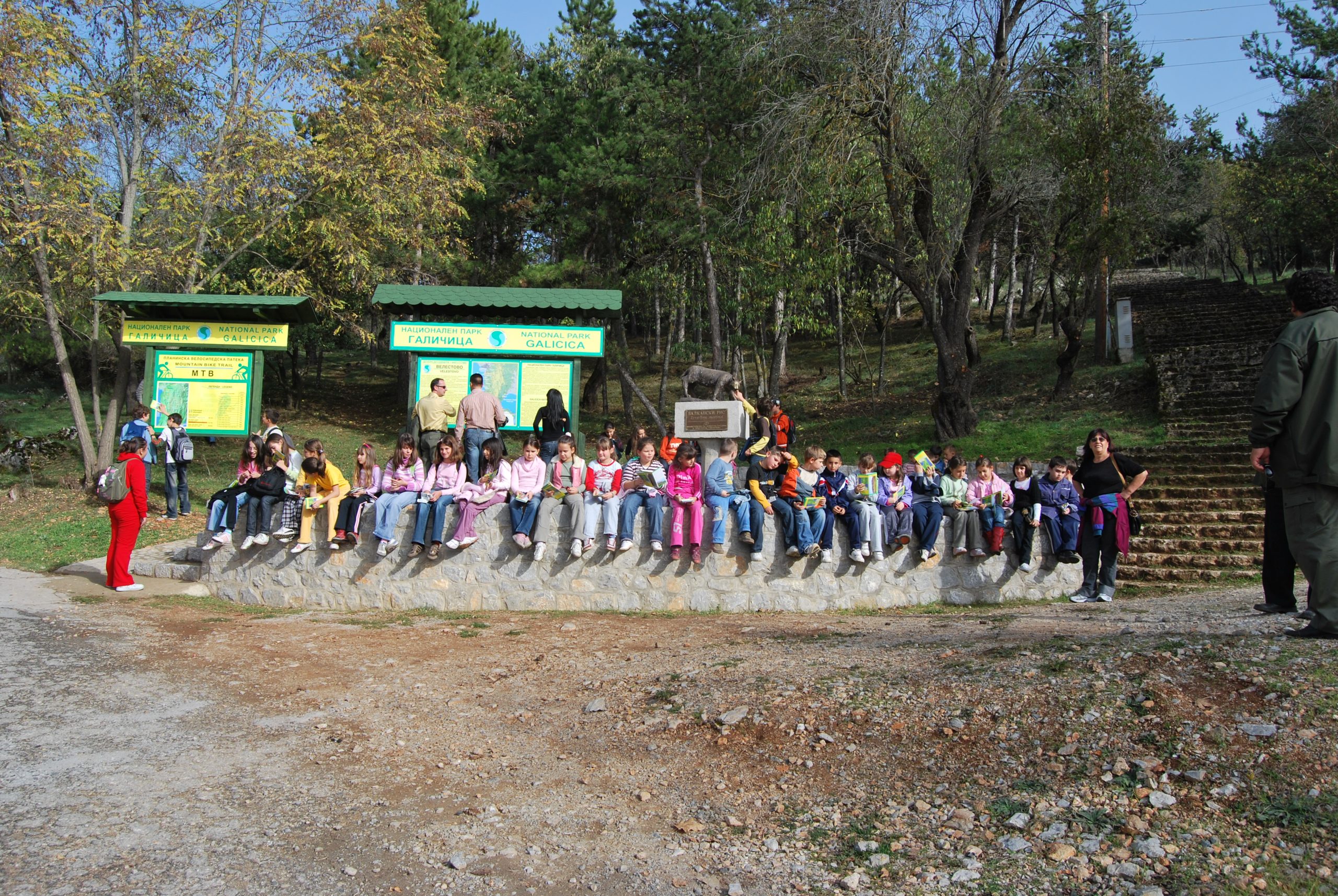

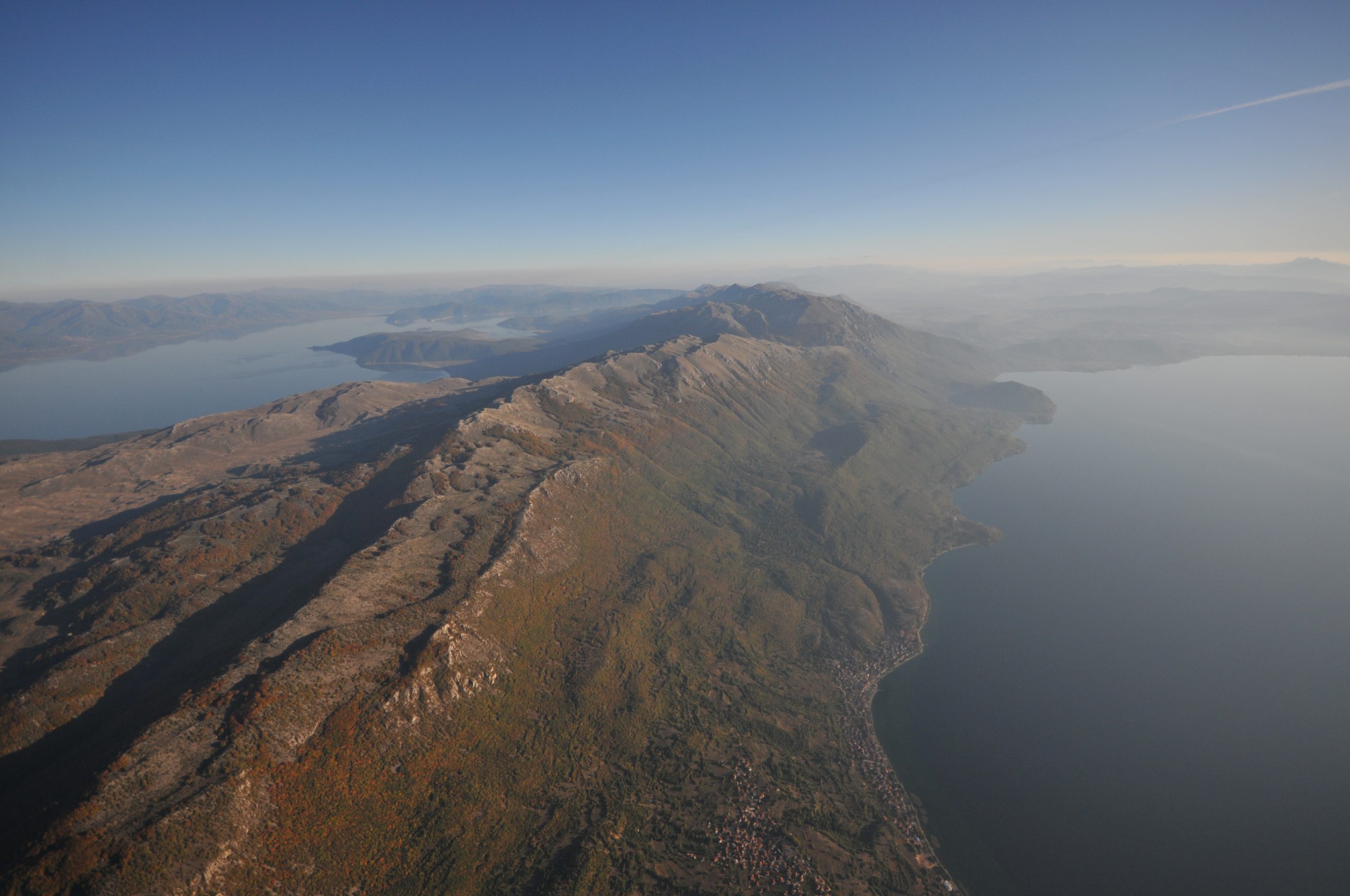

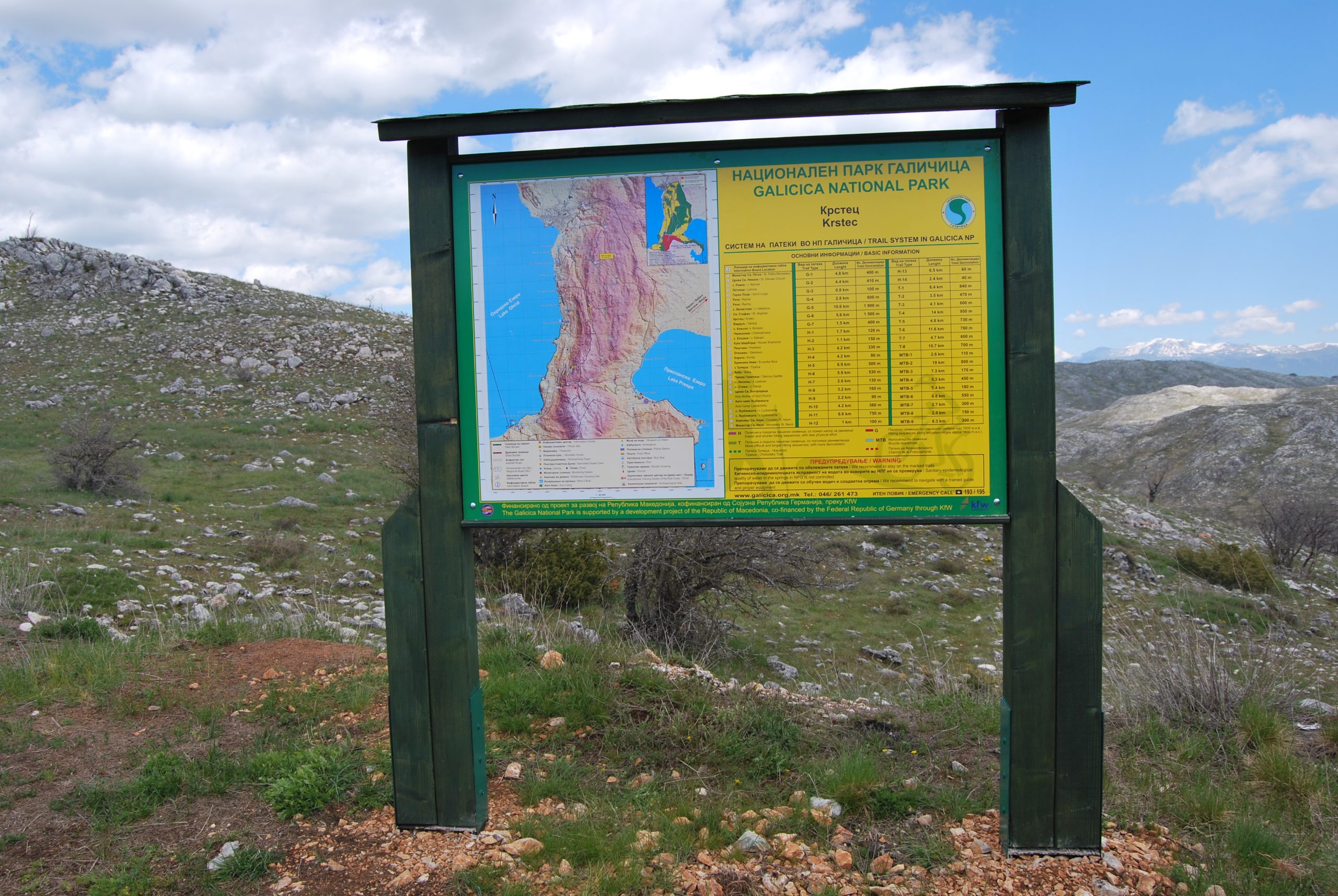



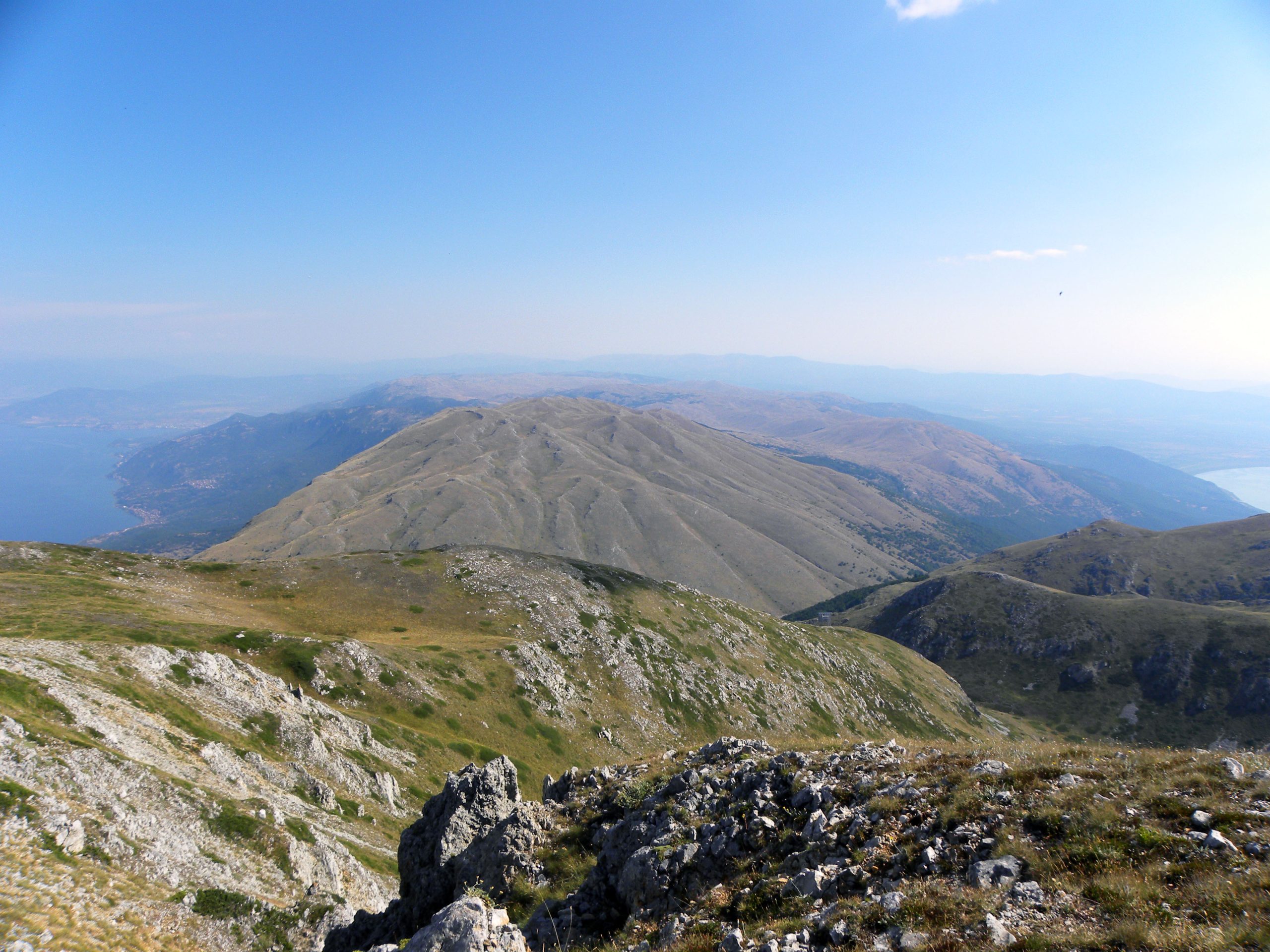

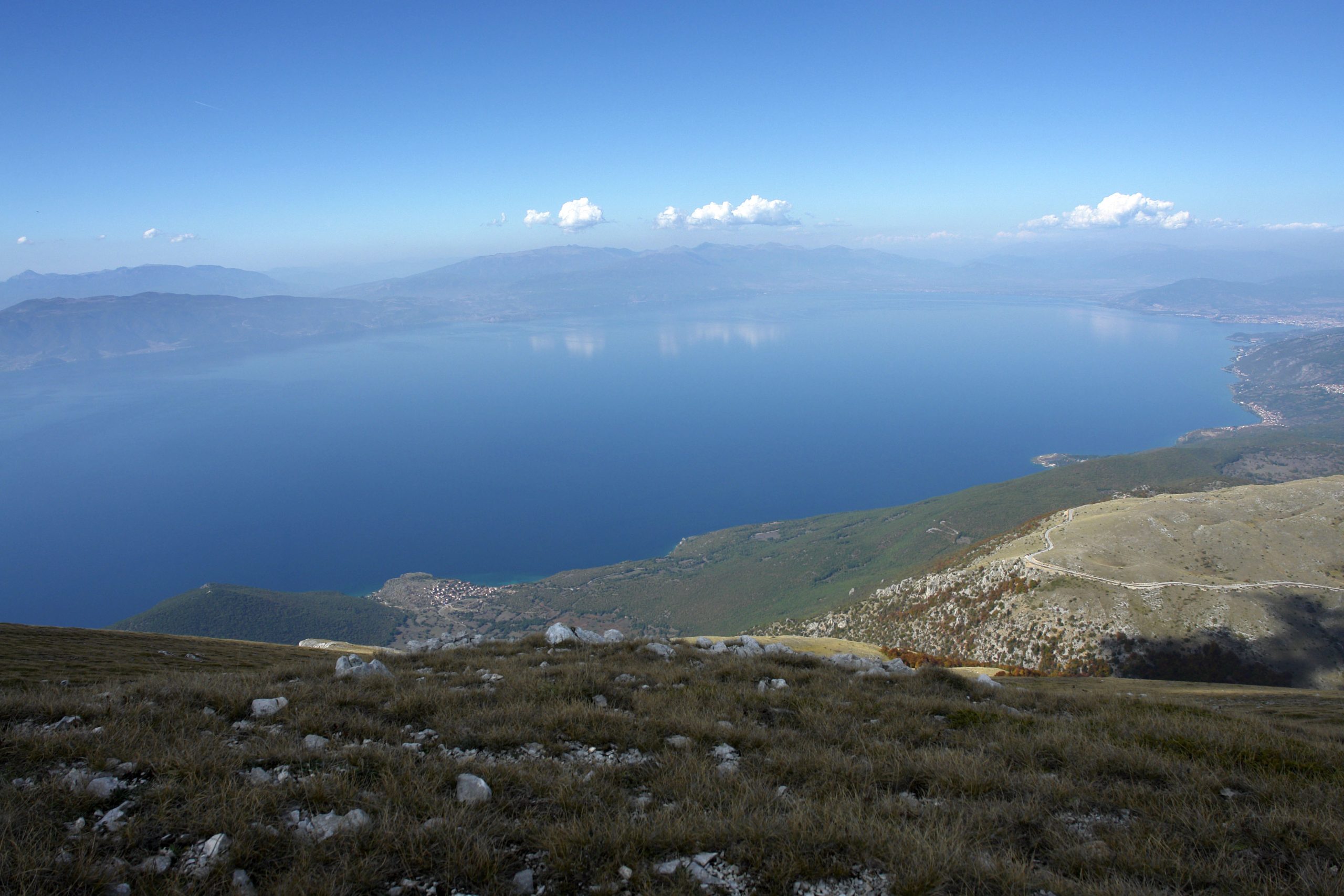


 Lake Ohrid
Lake Ohrid THE NATIONAL PARK GALICICA
The National Park Galicica is declared in 1958 in order to preserve the flora and fauna and the natural appearance of the mountain Galicica.Today the Park is recognized as one of the most important areas or a “hotspot” of biological diversity in Europe, which is confirmed by numerous international nominations such as: “UNESCO World Heritage”, “Emerald site”, “Important Plant Area”, “Primary Butterfly Area” and potentially “NATURA 2000 site” The park is the “hotspot” of biological diversity in Europe and beyond- globally. It is separated from the other areas similar in size of immense treasure of habitats and species on relatively small space. An area of approximately 25.000 ha, brings together more than 37 types of habitats and 40 plant communities, about 1600 taxa of vascular plants, over 143 species lichenoid fungi, more than 480 fungi and over 3.231 taxa of fauna. CavesThe limestone nature of the mountain is a reason for the richness of underground geomorphologic forms such as caves and pits which represent important habitats of key species. According to EUNIS classification from 2005, there are three types of habitats in the Park which are considered rare or endangered in Europe. Consequently, these habitats contribute to the Park as a special conservation area under the European ecological network NATURA 2000. From the caves as important habitats- Meckina Dupka, Voila, Leskoska Cave can be separated, and the cave Samotska Dupka is the largest cave in the park with length of 224 m.
Endemic flora and fauna In the National Park, there is exceptionally large number of endemic flora and fauna taxa, such as: 29 algae taxa, 12 species of flower plants, 68 invertebrate animal taxa and 4 vertebrate animal taxa. Besides, the Park has many other endemic taxa for Macedonia and the Balkans such as: 46 vascular plants taxa, 89 invertebrate animal taxa and 14 vertebrate animal taxa. Because of the existence of these species, the Park is of immense importance for the conservation of the biological variety in Macedonia, but also for the science globally. Species of great socioeconomic importanceThere are a large number of plants and fungi in the Park which are gathered for their nutritional, healing and aromatic features, for personal or commercial use. Among the plants gathered in the Park, we can single out the Ohrid Tea (Sideritis rаeseri) as a healing plant. From the other products in the Park we can separate the spruce flowers from the Blue spruce (Juniperus communis). Given the fact that the productive cycle of the blue spruce is 4 years, the quantities of collecting its products are variable. In the past twenty years, the quantities of this product marked constant increase due to the succession of large areas of secondary alpine pastures spruce. Species which are highly recognizable and attractive for the locals and the visitorsFrom the higher plants those are: Helichrysum zivojini, Crocus cvijic, Sideritis rаeseri, Astragalus mayeri, Juniperus excelsa, Morina persica, Sempervivum galicicu, Quercus trojana, Genista radiata and Lilium heldreichii. From the fungi, in this group of species belong: Amanita caesarea, Battarraea phalloides, Hymenochaete cruenta, Myriostoma coliforme, Pisolithus arhizus and Pyrofomes demidoffii. From the invertebrate animals: Saga pedo, Rosalia alpina, Lucanus cervus, Anax imperator, Paracaloptenus caloptenoides, Calosoma sycophanta and Carabus gigas. In the vertebrate animals we can include a large number of the birds, especially the birds of prey, the pelicans and many others. From the mammals: the brown bear (Ursus arctos), the lynx (Linx linx), the wolf (Canis lupus), the wild goat (Rupicapra rupicapra balcanica), the red deer (Cervus elafus) and the doe (Capreolus capreolus).Beside the biological variety, among the crucial natural values of the Park are the rare geomorphologic phenomena. Old Galicica and the island “Big City” according to their overall geomorphologic characteristics are considered rare or unique forms in South- East Europe. From the separate relief forms of Old Galicica we can separate the grass terraces towards the Prespa side of Galicic,a which by their specific characteristics are considered unique and exceptionally rare in the Euro-Mediterranean region and globally. Beside them, as much important are considered the stone hoes inside the cirques of Old Galicica which are rear or unique forms in South-East Europe, while the very cirques are of national importance. Namely, on the Galicica Mountain the karst phenomena are representative of the dominant genetic type of relief forms. Galicica is a typical karst area on which the Triassic massive limestone lies across the crystal schist. Those are terrains that were exposed on the external factors for a very long time which initiated the process of karstification. Micro and macro relief surface karst forms are noticed, among which the largest on Galicica Mountain are the karst fields. There are four of them: Suvo Pole, Sharboica (Asan Giura), Vardul and Giafa. All of them mainly have latitudinal direction of starching same as Galicica. The bottom of every field is approximately on the same height from 1480 to 1440 A.S.L. From the underground karst forms there are around ten caves and two pits registered so far. From the genetic types of shores along the Ohrid and Prespa coast, along the foot of the Mountain Galicica, especially striking are the tectonic and typically abrasive ones. The latter are caused by the mechanical movements of the waves which created steep sections - cliffs.There are many springs that flow into the lake from the territory of Macedonia, as well as the ones from Albania. The most prominent springs from the Macedonian side that can be found in many legends and folk songs are the Black Drim River Springs at the St. Naum Monastery, whereas from Albania are the Tushemisht Springs.With its unique flora and fauna, Lake Ohrid is considered to be one of the biggest biological reservoirs in Europe. From the very first scientific researches that had been done during the 20th century it has been discovered that in the Lake Ohrid, as one of the oldest lakes on the planet, ancient life forms that do not exist anywhere else in the world or can be found only as fossils, have survived here.Lake Ohrid fish fauna has an exceptional significance and consists of 17 species, ten of which are endemic. They are divided into three groups: trout, white fish and eels. The most famous among the endemic species that belong to the family of Trouts are “Letnica” (Salmo Letnica) and “Belvica” (Salmo Ohridanus). The other species that inhabit this rich lake basin are: the eel (Anguilla anguilla), the chub (Leuciscus Cephalus), the carp (Cyprinus carpio), the barbell (Barbus fluvialis), the roach (Rutilus rubilius ohridanus), as well as the little bleak (Alburnus, alburnus Alborella).Ohrid round sponge (Ochridaspongia rotunda), endemic to Lake Ohrid is one of the most interesting relic form of the lake, although there are other sponge species that are more prevalent in the lake basin. The scientists compare the Ohrid round sponge only to the endemic sponges of the Tiberias Lake (the Sea of Galilee) in the Middle East and the Lake Baikal in Siberia. The conclusion of the scientists is that Ohrid, Baikal and Tiberias sponges are very old remains of the ancient life forms from the Euro-Asian region and each species exist even today in their own lake basin.The systematic researches of the Lake Ohrid have started in 1922 by Dr. Sinisha Stankovic, PhD. His scientific work about the ancient flora and fauna have lasted more than half a century up until his death. He proved that Lake Ohrid is inhabited by a tremendous number of endemic and completely unknown life forms and for that reason this lake presents a “Unique Natural Museum”. Therefore, Lake Ohrid is one of the rarest natural reservoirs on our planet, and what is very important from a scientific point of view is that this lake has not changed geologically for quite a long time. Exactly for this reason Lake Ohrid is considered as an ideal laboratory for discovering many secrets regarding the origins and the existence of life forms on the planet.The fauna and flora which characterizes with its immense biodiversity of endemic and ancient species gives a special attribute to the lake on a world level. Although the number of the endemic species is the highest in the Lake Baikal, where there are 632 endemic species, the Lake Ohrid with its 212 endemic species spread out on the lake surface of 358 km2, is distinguished in the world as lake with greatest biodiversity per area unit. (Albrecht & Wilke, 2008).

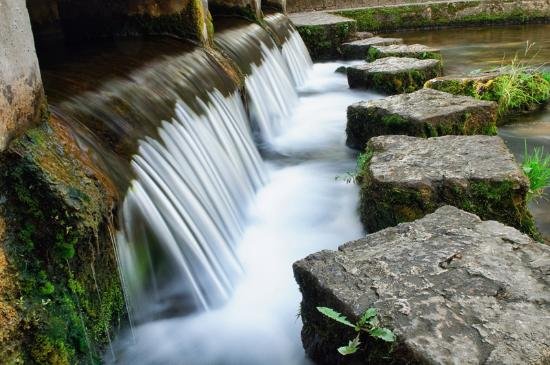
 Lake Ohrid
Lake Ohrid Biljana’s Springs
For the clear water of Biljana’s Springs, many songs have been sung by the people. However, only one legend, retold to this day, is associated with the creation of the Ohrid boat. Once upon a time, in the palace under the lake near Studenchishte, lived the fairy Ezerka, daughter of Grandpa Karaorman. The fairy Ezerka ruled over the lake and constantly troubled the fishermen, overturning their boats and returning the caught fish to the lake. She was very jealous and one day she kidnapped the beautiful maiden Biljana, granddaughter of Grandpa Chun. She took her to her palace to play with her. The beautiful Biljana cried all night from sorrow, and her tears turned into springs, which were later named Biljana’s Springs. Grandpa Chun, to defeat the fairy Ezerka, made a large boat. On one side, 6-7 people rowed, and only one steered. The fairy Ezerka could not overturn this large boat, and with it, Grandpa Chun saved the beautiful Biljana. Thus, after Grandpa Chun, the large boat was named “chun,” which is unique in its appearance in the world.


k
 Lake Ohrid
Lake Ohrid St. Naum springs
The lake has many springs and about 40 big and small rivers flow into it. As a result of that, the lake has crystal clear water and during a nice sunny day the water is transparent up to 22 meters in the depths, which is a true rarity. There are strong springs around St. Naum Monastery, which come out from the limestone caves at the foot of Galichica. At first, the water forms a small picturesque lake which throughout the years of its existence has formed two small picturesque islands. The surrounding water, due to the water plants, turns into a real coloration. There is not a person who can show indifference to all that almost extraterrestrial beauty. The crystal clear water of the small lake through a short and rapid river flows into Lake Ohrid. The other famous springs are Studenchishta, better known as Biljana’s springs, which are very near the center of the town and have always been the favorite picnic area for the Ohrid citizens and its visitors.Black Drim River flows out of Lake Ohrid and flows into the Adriatic Sea.

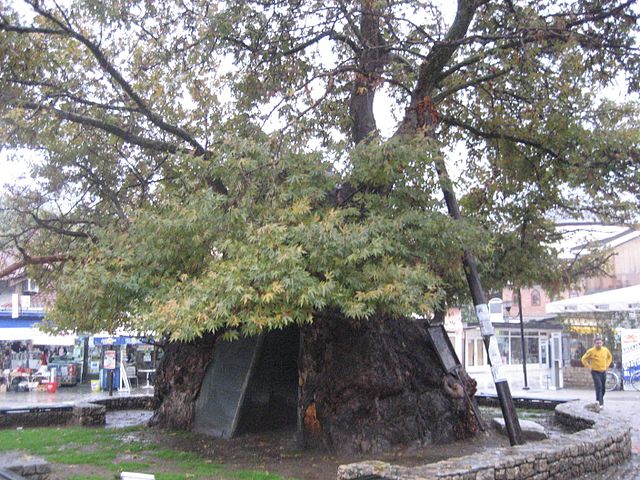
 Lake Ohrid
Lake Ohrid PLANE TREE
On the Оld ohrid distric you will come across the oldest thousand -year -old tree called chinar or Plane Tree (Platanus orientalis)the legend tells that it was planted by St.Kliment in 893.

